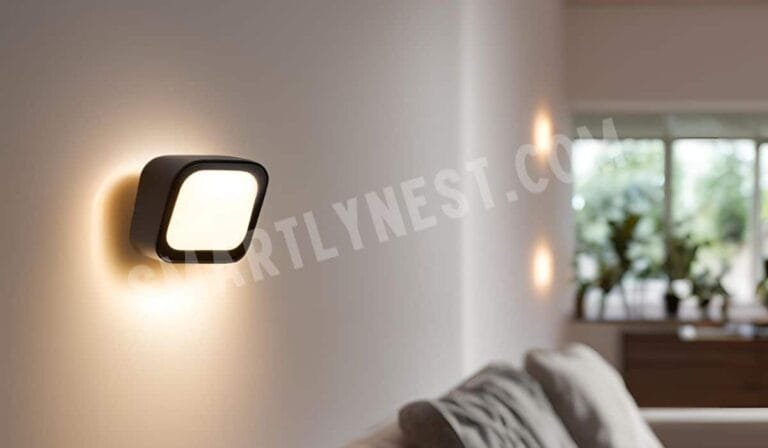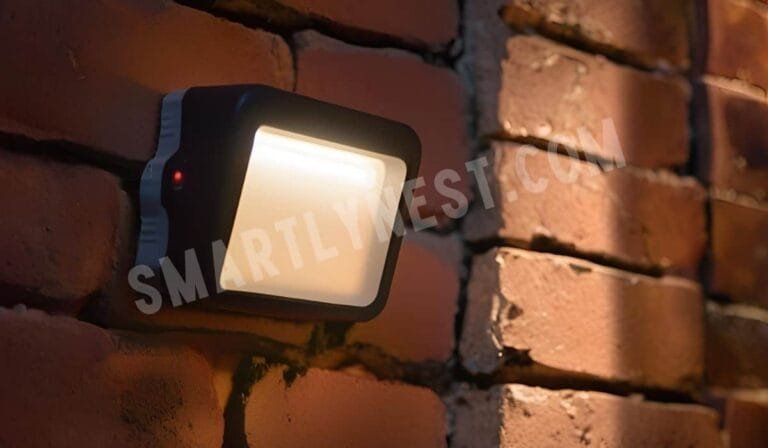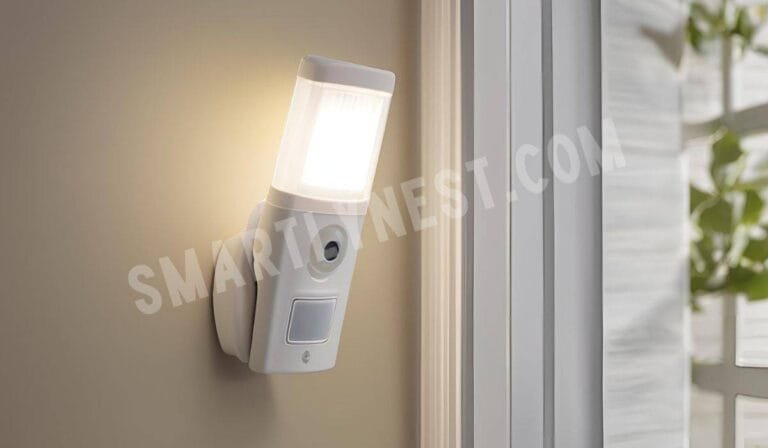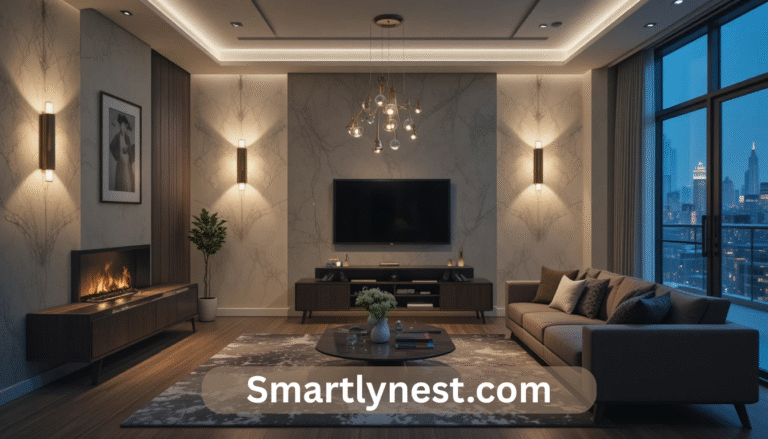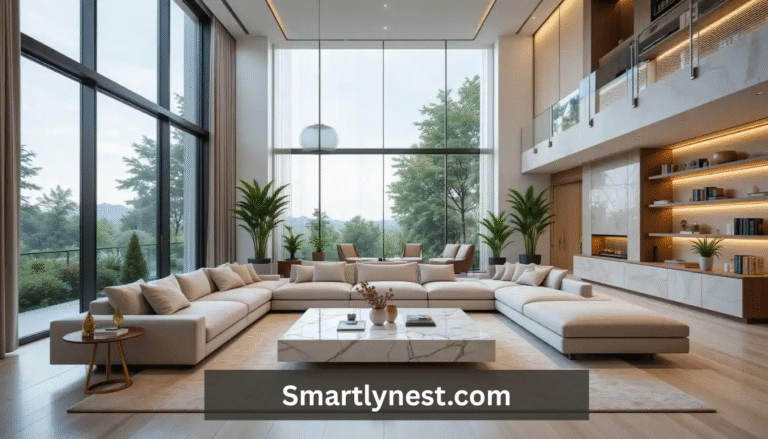
In the pursuit of a well-organized and efficiently lit home, the humble closet often gets overlooked. Yet, with the right lighting, this storage space can transform from a dark, cluttered abyss into a beacon of organization. Enter the world of motion sensor LED closet lights – a game-changing solution that combines energy efficiency, convenience, and smart technology. These innovative devices automatically illuminate your closet when you approach, providing hands-free lighting exactly when and where you need it. Whether you’re fumbling for that perfect outfit in the early morning hours or searching for holiday decorations in a dim attic, motion sensor LED closet lights offer a practical and modern lighting solution. In this comprehensive guide, we’ll explore the best options on the market, delve into their features, and help you choose the perfect light to brighten up your storage spaces.
Understanding Motion Sensor LED Closet Lights
1. What Are Motion Sensor LED Closet Lights?
Motion sensor LED closet lights are innovative lighting solutions designed to automatically illuminate enclosed spaces when movement is detected. These devices combine three key technologies:
- Motion sensors that detect physical movement within a specified range
- LED (Light Emitting Diode) bulbs known for their energy efficiency and longevity
- A control system that activates the light when motion is sensed and turns it off after a set period of inactivity
How Do They Work?
The magic behind these lights lies in their motion sensors. Most commonly, these lights use passive infrared (PIR) sensors that detect changes in heat signatures within their field of view. When a warm object (like a person) moves into the sensor’s range, it triggers the light to turn on. After a predetermined period of no movement, the light automatically shuts off, conserving energy.
Types of Motion Sensor LED Closet Lights
- Battery-operated: These are the most common and easiest to install. They run on standard batteries and can be placed anywhere without the need for wiring.
- Rechargeable: Similar to battery-operated models but with built-in batteries that can be recharged, often via USB.
- Hardwired: These connect directly to your home’s electrical system, providing a permanent lighting solution without the need for battery changes.
- Smart lights: The latest evolution in closet lighting, these can be controlled via smartphone apps and often integrate with broader smart home systems.
Benefits of Motion Sensor LED Closet Lights
1. Energy Efficiency
One of the primary advantages of motion sensor LED closet lights is their energy efficiency. LEDs consume significantly less power than traditional incandescent or even CFL bulbs. Coupled with motion-sensing technology, these lights only operate when needed, further reducing energy consumption. This not only lowers your electricity bills but also reduces your carbon footprint.
2. Convenience
The hands-free operation of motion sensor lights is a game-changer, especially in closets. No more fumbling for a light switch with arms full of laundry or struggling to find the pull cord for an overhead light. The light activates as soon as you open the closet door or step inside, providing immediate illumination.
3. Enhanced Safety
Automatic lighting can significantly improve safety, especially in dark or hard-to-navigate spaces. By instantly illuminating your path, these lights reduce the risk of trips and falls. This is particularly beneficial for nighttime use or in closets with steps or uneven surfaces.
4. Versatility
While designed for closets, these lights are incredibly versatile. They can be used in pantries, under cabinets, in garages, attics, and even outdoor spaces like sheds. Their adaptability makes them a valuable lighting solution throughout the home.
Choosing the Best Motion Sensor LED Closet Light
1. Brightness and Lumens
The brightness of LED lights is measured in lumens. For a standard closet, a light with 100-200 lumens is usually sufficient. Larger spaces may require lights with 400 lumens or more. Some models offer adjustable brightness, allowing you to customize the light output to your needs.
2. Battery Life and Power Options
For battery-operated models, consider the expected battery life. Some lights can last for months on a single set of batteries, while others may need more frequent changes. Rechargeable options eliminate the need for battery replacements but require periodic charging. Hardwired options never need charging but require more complex installation.
3. Sensor Range and Sensitivity
The effectiveness of a motion sensor light depends largely on its detection range and sensitivity. Most closet lights have a range of 10-15 feet, which is sufficient for most spaces. Some models allow you to adjust the sensitivity to prevent false triggers or to customize the light’s behavior to your specific needs.
4. Light Color Temperature
LED lights come in various color temperatures, measured in Kelvins (K). For closets, a cool white light (4000K-5000K) is often preferred as it provides clear, crisp illumination that’s ideal for distinguishing colors and finding items. However, some people prefer a warmer light (2700K-3000K) for a more comfortable ambiance.
5. Size and Design
Consider the physical dimensions of the light and how it will fit in your space. Some lights are designed to be mounted on the ceiling, while others can be attached to walls or shelves. The design should complement your closet’s aesthetics and not interfere with storage space.
6. Installation Method
Ease of installation is a crucial factor. Battery-operated and rechargeable lights typically use adhesive strips or magnetic mounts for easy, tool-free installation. Hardwired options require more complex installation and may need professional help.
7. Additional Features
Some motion sensor LED closet lights come with extra features that can enhance their functionality:
- Adjustable timer settings to control how long the light stays on after motion is no longer detected
- Remote controls for manual operation or adjusting settings
- Multiple lighting modes (e.g., motion-activated, always-on, or dim night light mode)
- Smart home compatibility for integration with systems like Alexa or Google Home
Top Picks for Motion Sensor LED Closet Lights
1. Best Overall: Brilliant Evolution Wireless LED Puck Light 6 Pack
This versatile set of puck lights offers excellent brightness, long battery life, and easy installation. With a sleek design and adjustable settings, they’re suitable for various closet sizes and configurations.
2. Best Budget Option: Mr. Beams MB720A Sleep Friendly Battery-Powered Motion-Sensing LED Stick-Anywhere Nightlight
For those on a tight budget, these compact lights provide reliable motion-sensing illumination at an affordable price. While not as bright as some premium options, they’re perfect for small closets or as supplementary lighting.
3. Best Rechargeable: Searik 78 LED Closet Light
This rechargeable light boasts an impressive 78 LEDs, providing ample illumination for larger closets. With multiple mounting options and long battery life, it’s a convenient and eco-friendly choice.
4. Best Hardwired: HARRRRD Motion Sensor Closet Light
For those looking for a permanent solution, this hardwired option offers bright, reliable lighting with no need for battery changes. Its slim profile and modern design make it an attractive addition to any closet.
5. Best Smart Home Compatible: Philips Hue Motion Sensor Smart Light
While pricier than standard options, this smart light integrates seamlessly with the Philips Hue ecosystem, offering unparalleled control and customization options through smartphone apps and voice assistants.
Installation and Maintenance Tips
1. Installing Battery-Operated or Rechargeable Lights
- Clean the mounting surface thoroughly.
- If using adhesive strips, remove the protective backing and press firmly onto the light.
- Choose a location that maximizes coverage and sensor effectiveness.
- Press the light firmly against the chosen surface for 30 seconds to ensure proper adhesion.
2. Maintaining Your Motion Sensor LED Closet Lights
- Regularly check and replace batteries in battery-operated models.
- Keep the sensor clean and free from dust or debris that might interfere with its operation.
- Periodically test the light to ensure it’s functioning correctly.
- For rechargeable models, avoid letting the battery drain completely before recharging.
Creative Uses Beyond the Closet
Motion sensor LED lights aren’t just for closets. Here are some innovative ways to use them throughout your home:
- Under-cabinet lighting in kitchens
- Stairway illumination for nighttime safety
- Pantry lighting for easy food item location
- Garage workbench lighting
- Attic or basement pathway lighting
- Outdoor shed or storage unit illumination
- Nighttime bathroom lighting (using warm, dim settings)
Environmental Impact and Energy Savings
Switching to motion sensor LED closet lights can significantly reduce your energy consumption. LEDs use up to 75% less energy than incandescent bulbs and last up to 25 times longer. The motion-sensing feature further reduces energy use by ensuring lights are only on when needed. Over time, this can lead to substantial energy savings and a reduced carbon footprint.
Writer’s Opinion: The Future of Closet Lighting
As someone who’s tested numerous lighting solutions over the years, I’m consistently impressed by the evolution of motion sensor LED closet lights. The convenience they offer is unparalleled – no more entering a dark closet or forgetting to turn off lights. The energy savings are substantial, and the latest smart home compatible options add a level of control and customization that was unimaginable just a few years ago.
However, there’s still room for improvement. I’d love to see more options with adjustable color temperatures, allowing users to switch between cool light for daytime use and warmer tones for evening. Additionally, integration with broader home automation systems could allow these lights to serve as part of a home’s security system, activating in patterns that mimic occupancy when homeowners are away.
Despite these potential improvements, I believe motion sensor LED closet lights are a must-have for any modern home. They represent a perfect blend of technology and practicality, enhancing our daily lives in subtle but significant ways. Whether you’re outfitting a single closet or upgrading lighting throughout your home, these innovative devices are well worth considering.
Frequently Asked Questions (FAQ)
How long do batteries typically last in motion sensor LED closet lights?
Battery life varies depending on usage and the specific model, but many lights can last 6-12 months on a set of batteries with normal use. Rechargeable models typically need charging every 2-3 months.
Can these lights be used in damp environments like bathroom closets?
Some models are designed for use in damp environments, but it’s important to check the manufacturer’s specifications. Look for lights with an IP44 rating or higher for moisture resistance.
Are motion sensor LED closet lights difficult to install?
Most battery-operated and rechargeable models are very easy to install, often using adhesive strips or magnetic mounts. Hardwired options may require professional installation.
How do I choose the right brightness for my closet?
Consider the size of your closet and its contents. For a standard closet, lights with 100-200 lumens are usually sufficient. Larger walk-in closets may benefit from brighter options with 400 lumens or more.
Can the sensitivity of the motion sensor be adjusted?
Many higher-end models allow you to adjust the sensor’s sensitivity. This can be useful to prevent false triggers or to customize the light’s behavior to your specific needs.
Do these lights work well with dark-colored closets?
Yes, motion sensor LED lights work effectively in dark-colored closets. However, you may want to opt for a slightly brighter model, as dark surfaces absorb more light.
Are there any smart home compatible options available?
Yes, several manufacturers offer motion sensor LED closet lights that can integrate with smart home systems like Alexa, Google Home, or Apple HomeKit. These allow for voice control and integration with other smart home routines.
Conclusion: Brightening Your Future, One Closet at a Time
As we’ve explored in this comprehensive guide, motion sensor LED closet lights represent more than just a convenient way to illuminate your storage spaces. They embody a perfect fusion of energy efficiency, cutting-edge technology, and practical design that can transform your daily routines and enhance your living spaces.
From the energy savings that benefit both your wallet and the environment to the enhanced safety and organization they provide, these innovative lighting solutions offer a multitude of advantages. Whether you opt for a simple battery-operated model or a fully integrated smart home system, the right motion sensor LED closet light can make a significant difference in how you interact with your living spaces.
As technology continues to evolve, we can expect even more exciting developments in this field. Imagine closet lights that not only illuminate but also help you organize, perhaps using projection technology to guide you to specific items or integrating with your smart wardrobe app to suggest outfits.
For now, though, the current generation of motion sensor LED closet lights offers more than enough features and benefits to justify upgrading your home lighting system. They represent a small change that can make a big impact on your daily life, bringing a touch of futuristic convenience to the often-overlooked corners of your home.
So why wait? Take the plunge into the world of smart, efficient lighting. Your future self – fumbling in a dark closet at 6 AM trying to find that specific tie or pair of shoes – will thank you. Embrace the light, and let your closets shine!

